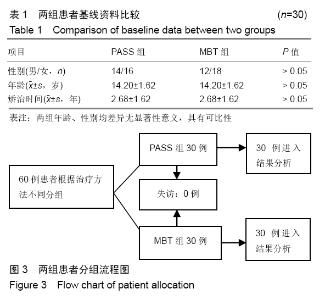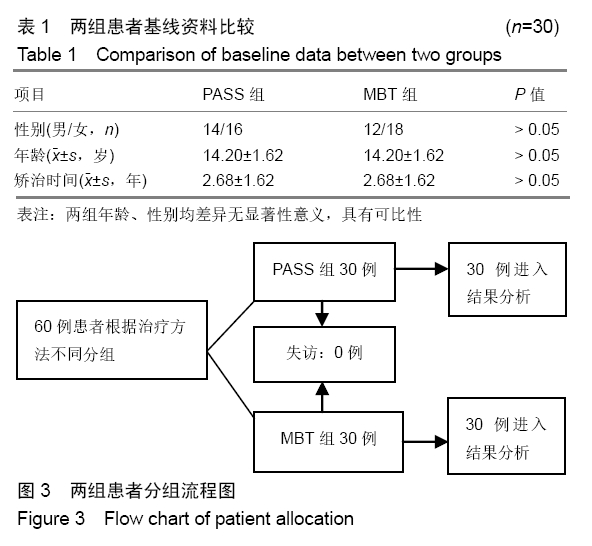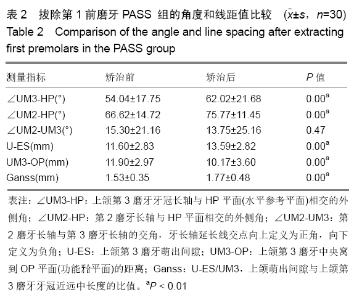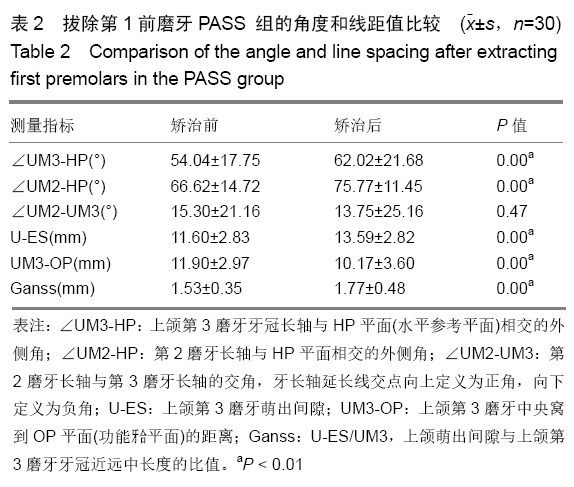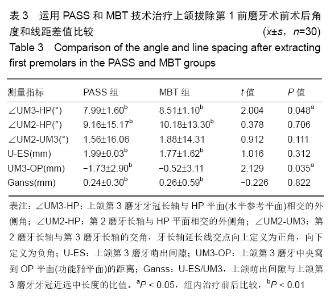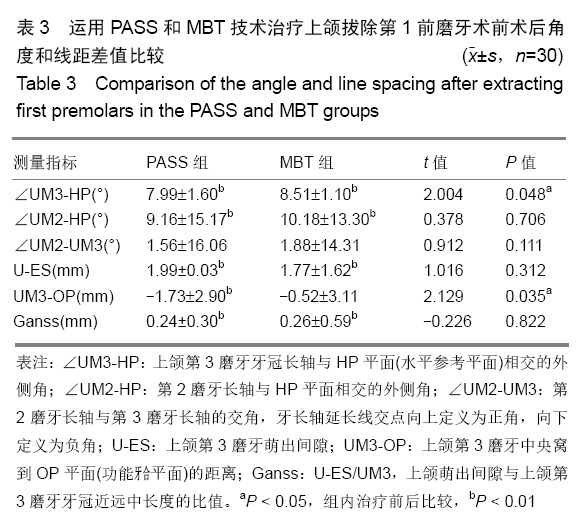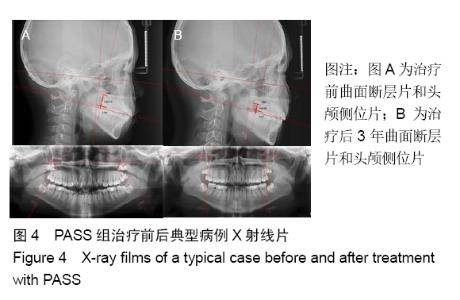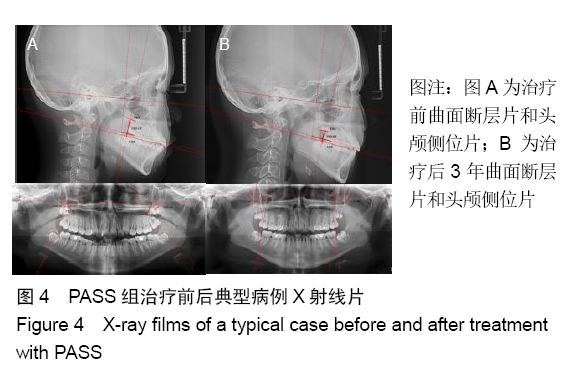[1] 于泉,龚昕,嵇国平,等. 正畸拔除下颌前磨牙对第三磨牙萌出影响的测量研究[J]. 实用口腔医学杂志, 2010, 26(1):103-107.
[2] GENEST-BEUCHER S, GRAILLON N, BRUNEAU S, et al. Does mandibular third molar have an impact on dental mandibular anterior crowding? A literature review. J Stomatol Oral Maxillofac Surg.2018; 119(3):204-207.
[3] ESAN T, SCHEPARTZ LA. Third molar impaction and agenesis: influence on anterior crowding.Ann Hum Biol. 2017;44(1):46-52.
[4] BREZULIER D, FAU V, SOREL O. Influence of orthodontic premolar extraction therapy on the eruption of the third molars: A systematic review of the literature. J Am Dent Assoc. 2017;148(12):903-912.
[5] AZIZI F, SHAHIDI-ZANDI V.Effect of different types of dental anchorage following first premolar extraction on mandibular third molar angulation. Int Orthod.2018;16(1):82-90.
[6] MICLOTTE A, GROMMEN B, CADENAS DE LLANO-PÉRULA M, et al. The effect of first and second premolar extractions on third molars: A retrospective longitudinal study. J Dent.2017;61:55-66.
[7] 范琳琳,况琴,唐玉娟,等.正畸拔除前磨牙对第三磨牙倾角影响的Meta分析[J]. 中南大学学报(医学版), 2015, 40(3):317-325.
[8] 赵珍,古力巴哈•买买提力.生理性支抗矫治技术对磨牙支抗控制的研究进展[J].口腔医学, 2018,38(12):1149-1152.
[9] XU TM. New concept of physiologic anchorage control. APOS Trends in Orthodontics. 2015; 5(6):250.
[10] VENTA I, MURTOMAA H, TURTOLA L, et al. Assessing the eruption of lower third molars on the basis of radiographic features. Br J Oral Maxillofac Surg.1991;29(4):259-262.
[11] RICKETTS RM, TURLEY P, CHACONAS S, et al. Third molar enucleation: diagnosis and technique. J Calif Dent Assoc. 1976;4(4): 52-57.
[12] 葛元输,刘进,郭鑫,等.正畸治疗中磨牙的拔除与保留(十六)——正畸拔除下颌第一磨牙后第三磨牙位置和倾斜度变化[J].临床口腔医学杂志, 2007,23(3):186-187.
[13] GOHILOT A, PRADHAN T, KELUSKAR KM. Effects of first premolar extraction on maxillary and mandibular third molar angulation after orthodontic therapy. J Oral Biol Craniofac Res. 2012;2(2):97-104.
[14] JAIN S, VALIATHAN A. Influence of First Premolar Extraction on Mandibular Third Molar Angulation.The Angle Orthodontist. 2009; 79(6):1143-1148.
[15] METTES TG,GHAEMINIA H, NIENHUIJS MEL, et al. Surgical removal versus retention for the management of asymptomatic impacted wisdom teeth// The Cochrane Library. John Wiley & Sons. Ltd. 2012.
[16] 黄成,蒋备战,康非吾.下颌第三磨牙萌出状态与第二磨牙远中邻面龋坏的相关性研究[J].口腔颌面外科杂志, 2015, 25(1):47.
[17] American Association of Oral and Maxillofacial Surgeons: The Management of Impacted Third Molar Teeth[EB/OL]. [2016/4/9]. http://www.aaoms.org/images/uploads/pdfs/ impacted_third_molars.pdf
[18] KAUTTO A, VEHKALAHTI MM, VENTÄ I. Age of patient at the extraction of the third molar. Int J Oral Maxillofac Surg.2018;47(7):947-951..
[19] KAUR J, PILLAI SA, KUMAR HKS , et al. Management of an Ectopic Lower Canine by Autotransplantation and Orthodontic Treatment.J Clin Orthod. 2016;50(11):673-682.
[20] TSOURAKIS AK.Dental and skeletal contributions to molar occlusal development. Dissertations & Theses-Gradworks. 2013.
[21] AGARWAL SS, CHOPRA SS, KUMAR P, et al. A radiographic study of external apical root resorption in patients treated with single-phase fixed orthodontic therapy. Med J Armed Forces India.2016;72(Suppl 1): S8-S16.
[22] 李小彤,张东妹,杨雁琪. 影响口腔正畸治疗患者下颌第三磨牙状态改变的因素分析[J].北京大学学报(医学版), 2011, 43(2):267-271.
[23] SU H, HAN B, LI S, et al. Compensation trends of the angulation of first molars: retrospective study of 1 403 malocclusion cases. Intemational Jourmal of Oral Science.2014;6:175-181.
[24] ALIAGA-DEL CASTILLO A, JANSON G, ARRIOLA-GUILLÉN LE, et al. Effect of posterior space discrepancy and third molar angulation on anterior overbite. Am J Orthod Dentofacial Orthop. 2018;154(4): 477-486.
[25] BEHBEHANI F, ARTUN J, THALIB L. Prediction of mandibular third-molar impaction in adolescent orthodontic patients. Am J Orthod Dentofacial Orthop.2006;130(1):47-55.
[26] BAYRAM M, OZER M, ARICI S. Effects of first molar extraction on third molar angulation and eruption space.Oral Surg Oral Med Oral Pathol Oral Radiol Endod.2009;107(2):e14-e20.
[27] 哈丽哈•赛力克别克,许瑶,古力巴哈•买买提力.生理性支抗与机械力支抗控制策略[J]. 中国组织工程研究, 2017,23(10):1629-1634.
[28] 陈斯,杜飞宇,陈贵,等.新型交叉颊面管对磨牙支抗保护作用的临床研究[J].中华口腔正畸学杂志, 2013,20(1):26-30.
[29] ABU AE,ALBHAIRAN HM,ALKHATEEB SN.Mandibular third molar space in different antero-posterior skeletal patterns. Eur J Orthod. 2011;33(5):570-576.
[30] SANDLER J, MURRAY A, THIRUVENKATACHARI B, et al. Effectiveness of 3 methods of anchorage reinforcement for maximum anchorage in adolescents: A 3-arm multicenter randomized clinical trial. Am J Orthod Dentofacial Orthop.2014;146(1):10-20.
[31] AZIZI F, SHAHIDI-ZANDI V. Effect of different types of dental anchorage following first premolar extraction on mandibular third molar angulation.Int Orthod.2018;16(1):82-90.
[32] 李雪琦.口腔正畸治疗患者下颌第三磨牙状态改变的相关危险因素分析[J].口腔医学, 2018, 247(5):66-69.
|
